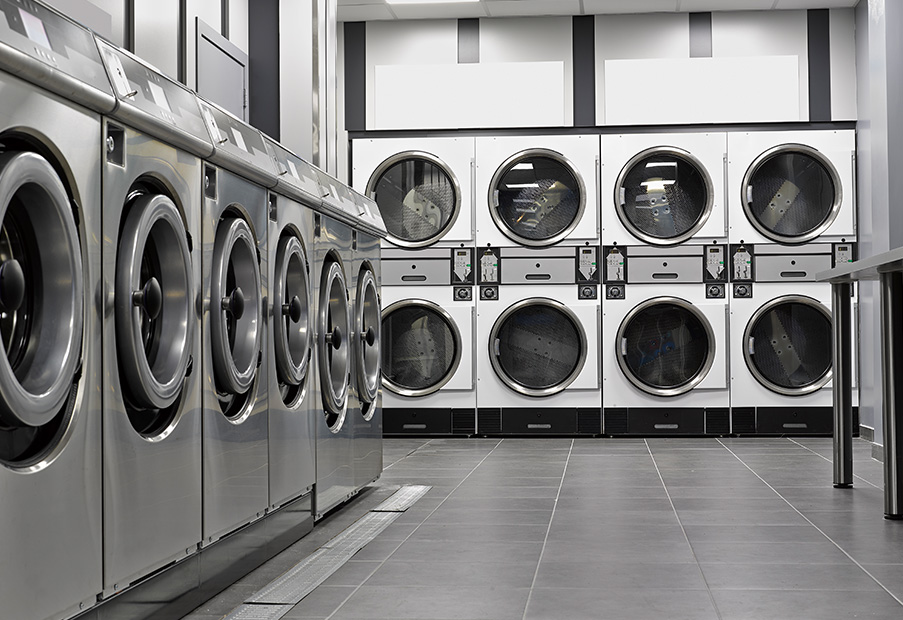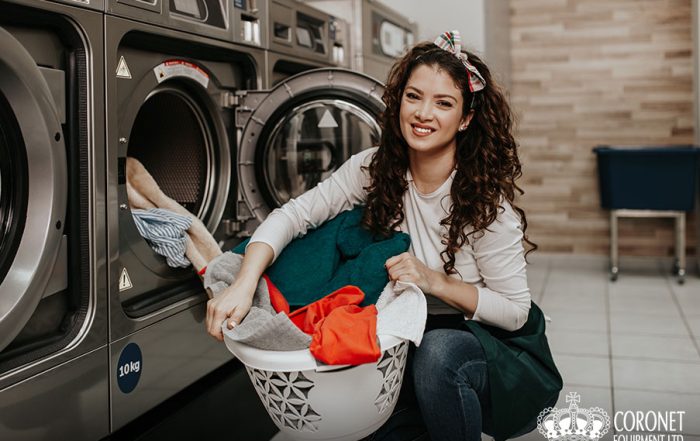The history of laundry and laundromats
If you own or use a laundromat, you’re part of a rich history! Humans have been washing their clothes and textiles in communal facilities for thousands of years. How amazing is that? From ancient times through to the present, laundry has played a critical role in the development of our economy and our community. Keep reading to find out more about the incredible history and evolution of laundry.
Ancient Egypt
Many of the early humans settled alongside waterways, with water serving numerous purposes for ancient civilizations. For one thing, it allowed them to clean clothing and other textiles. The ancient Egyptians would gather along the edge of the Nile in groups and beat their clothing over river rocks.While the Egyptians didn’t have dedicated facilities or special machines, their gatherings to wash clothes started a legacy.
Ancient Rome
No one can say the Romans weren’t innovative. Among their many inventions, Romans learned how to direct water using aqueducts, giving them more access to water.
They were also innovative when it came to fabric, which meant people could now own clothing in different styles and materials. One of the most popular fabrics in Rome was wool. While it was sturdy and long lasting, it also became dirty quickly in the humid Roman climate. This meant there was a demand for skilled washers, and soon enough, washers known as “Fullones” became popular.
Fullones washed their clients’ clothing in large vats. They would beat or even stomp on them to get rid of dirt and grime. The clothing was then hung to dry and then carefully brushed. Specialized laundry facilities and skilled washers existed for the first time in history.
19th Century
Something called a “Washhouse” began popping in the French countryside during the 19th century. And, by the end of the century, these washhouses were common in villages and cities all across Europe.
What’s a washhouse?
In the late 18th and early 19th Century, scientists, doctors, and the government all realized that clothing could transport dangerous diseases. It became imperative for people to regularly wash their clothing.
Governments decided to fund the construction of buildings known as washhouses, which were stone structures that had vats of both running and still water. It was far easier to wash clothing in the washhouses than it was to wash them in the river or your own home. Washhouses were often at waist height and located in central areas of the village. Rather than walking great distances to collect water or squatting by a stream, you could just go to the conveniently located washhouse.
Of course, back then it was the responsibility of women to wash their family’s clothing. Some women even began to turn a profit by offering to wash clothing for other people in their village. Washhouses quickly became an essential part of society, giving people a place to meet, share news, and even earn their own money.
Industrial Revolution
With the industrial revolution came technological advancements in almost every area of life, including laundry. This period saw the first iterations of mechanized washers and even tumble dryers.
During the industrial revolution, public services like hospitals, hotels, and restaurants became more popular than ever before. These businesses took advantage of mechanized laundry machines to keep up with the high volume of laundry. Soon, mechanized washers began being installed on site. These consisted of powered and automated agitators to move clothing around, as well as steam laundry machines.
Also around this time, the clothes wringer was invented to help with drying. This machine had two circular tubes that would turn together to squeeze water from clothing. Unfortunately, these machines resulted in many finger-related injuries and are not popular today.
20th Century
By the 20th century, mechanical laundry was no longer an exciting new invention, but the high cost still kept them out of reach for the average person. Only the wealthiest people had access to laundry equipment.
This all changed in the 1930s. C.A. Tannahill of Fort Worth, Texas, is credited with opening the first-ever modern laundromat in 1934. Customers could rent one of Tannahill’s electric laundry machines by the hour, allowing them to wash their clothing quickly and easily. The business model spread rapidly throughout Texas, and by the end of the decade, laundromats could be found across North America.
After the Second World War, laundromats became even more popular. In 1957, coin-operated machines were invented. Instead of renting machines from a clerk, customers could slide some coins in a slot and get to work. This led to the rise of 24-hour laundromats, which further popularized laundromats.
Today
Today’s laundromats offer all kinds of attractive conveniences. From wifi to luxury accommodations, they’re more than just a place to do laundry. In fact, they continue to provide an important place for people to gather and continue to help build community. Even though they’ve come a long way with modern technologies like online payments and automated machines, laundromats are still a profitable and popular business model. Many also offer additional services like wash & fold or delivery options.
Laundromats may seem like a modern fixture, but they’ve always been a cornerstone of community. People have been doing laundry together for thousands of years, and laundromats are a timeless institution that continue to provide an invaluable service.
Do you own a laundromat? Coronet Equipment has everything you need to make your laundromat a success. Find out how we can provide you with top-of-the-line machines, reputable service, and recommendations to make your laundromat continue to thrive well into the future.
Recent Posts
Year-End Excellence for Your Vended Laundry Business
Are you ready to round off the year on a high note with your vended laundry business? Look no further for expert insights and solutions that will set you up for growth in 2024. [...]
Merry & Bright: Tips for the Hospitality Industry
The holidays are often the busiest season in the hospitality industry. Keep your linens clean and crisp with our expert laundry tips! Coronet Equipment can help make your business shine this holiday season and [...]
Winning the Game Against Stinky Sports Laundry with Coronet Equipment – Keep Your Athletes Safe, Clean, and Ready to Perform
The Unsung Hero of Sports: Laundry Dirty uniforms can harbor dangerous bacteria, such as Methicillin-Resistant Staphylococcus aureus (MRSA). According to the Government of Canada, Community-Acquired MRSA (CA-MRSA) infections are becoming more common in athletes and [...]




